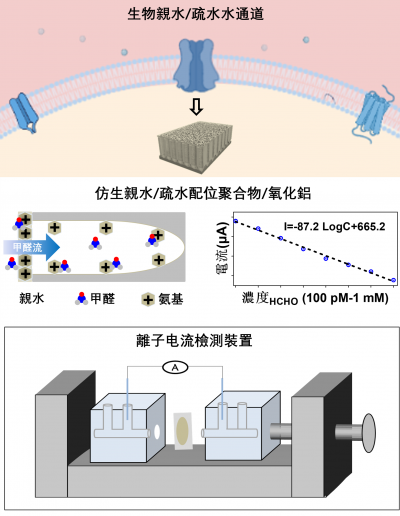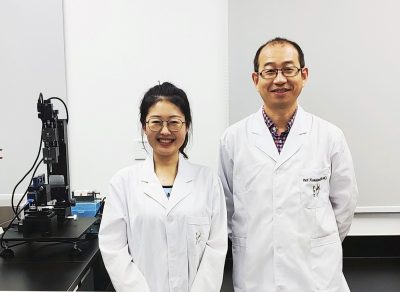A research team led by Xuanjun ZHANG, associate professor in the Faculty of Health Sciences (FHS), University of Macau (UM), has made significant progress in the development of formaldehyde detectors. The sensor developed by the team can rapidly and quantitatively detect formaldehyde pollution and food preservatives in the living environment. The research results have attracted much attention in the field of formaldehyde detection and have been published in the internationally renowned journal Nano Letters.
Formaldehyde is widely used in our daily life in clothing and textiles, food preservation, interior decoration, automobile manufacturing, and other products. The formaldehyde released in the living environment can undergo condensation reaction with the amino group on the protein when it enters the body, destroying the protein structure and making the protein dysfunctional or out of balance. In a more serious case, formaldehyde can cause cancer and threaten human life and health. The International Agency for Research on Cancer (IARC) has listed formaldehyde as a ‘known human carcinogen’ associated with sinus and nasopharyngeal cancer. The recent news that ‘Indoor formaldehyde causes leukemia’ has aggravated people’s worries about the problem of formaldehyde in the environment. In view of the urgency and severity of the current situation, it is of great significance to develop a device that can sensitively detect formaldehyde in complex environments.
Inspired by the hydrophilic/hydrophobic ‘Janus structure’ of biological aquaporins, which can control the passage of water molecules through the cell membrane, the research team assembled coordination polymers on a porous alumina membrane to adjust the hydrophilic/hydrophobic balance and determine whether the interface wettability affects the formaldehyde detection. It was found that the hydrophobic/hydrophilic balance of the heterogenous structure plays an important role in the detection of formaldehyde. The hydrophobic alumina barrier layer exerts a special nano-confinement effect, while the hydrophilic coordination polymer surface is beneficial to attract highly water-soluble formaldehyde into the channel. Formaldehyde efficiently condenses with amino groups in the confined space of nanochannels to generate new imines, resulting in changes in surface charge and wettability at the same time. This combined effect greatly improves the detection capability of the sensor. The newly developed sensor can accurately quantify formaldehyde over a broad range of 100 pM to 1 mM by monitoring the ion current.
The nanosensor highly simulates the hydrophobic-hydrophilic ‘Janus structure’ in biological aquaporins, and for the first time reveals the contribution of nanochannel membrane interface wettability to the high-performance sensing of formaldehyde from the perspective of the innovation of hydrophilic and hydrophobic balance. At the same time, a major breakthrough has been made in the research on formaldehyde detection. In a broader sense, this study profoundly demonstrates the intrinsic connection between nanosensor structure and function, and provides a template for the design of other efficient nanochannel sensors.
Prof. Xuanjun ZHANG is the corresponding author of the study, and PhD student Dan ZHANG is the first author. The project was supported by the Science and Technology Development Fund, Macao SAR (File no: 0085/2020/A2, 0114/2019/A2), the Natural Science Foundation of Guangdong Province (File no: 2022A1515010616), and UM’s research fund (File no: MYRG2020-00130-FHS). The full version of the research study can be viewed at: https://pubs.acs.org/doi/10.1021/acs.nanolett.2c00940



